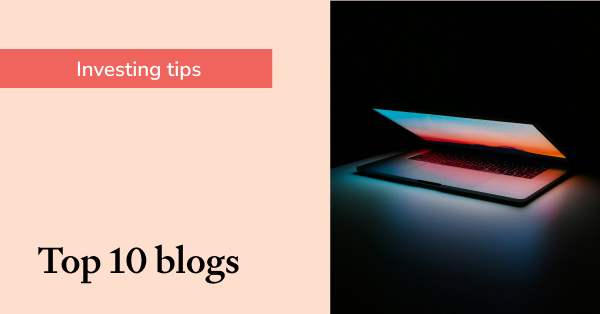Three ways investors approach market volatility
The below article is for informational purposes only and does not constitute a product recommendation, or taxation or financial advice and should not be relied upon as such. Please check with your adviser or accountant to obtain the correct advice for your situation.
Periods of increased market volatility are an inevitable part of investing and, if this was ever in doubt, 2020 has emphatically driven this point home. The significant increases in market volatility driven by US-China trade tensions and the COVID-19 pandemic show little sign of abating in the short term and are something investors need to factor into their plans for 2021 and beyond.
A good starting point is to accept volatility as a normal and necessary part of investing. Ultimately, elevated levels of market volatility can be challenging for investors but with this comes opportunity to both minimise risks and maximise opportunities. Here are three approaches investors use when taking a disciplined approach to volatility:

Diversification
Portfolio diversification is the most common approach to managing investment risks related to volatility. Diversification aims to reduce the risk of damaging losses from the performance of a single company, sector or asset class over the long term while delivering at least some exposure to better performing assets or markets. Markets are also notorious for overreacting to events and with an open mindset and a longer-term investment perspective that accepts short-term volatility, investors can begin to take a more dispassionate view.
For investors, this means carefully considering asset allocation as part of the portfolio construction process — either as part of a financial plan drawn up by an adviser or an informal strategy document. This will often take the form of splitting your portfolio into different investment buckets for specific markets or sectors with a low correlation to reduce the likelihood of concentrated losses. For example, holding a mix of riskier assets like equities, real estate and credit along with defensive assets like government and investment grade bonds, and cash to smooth returns over time. Or spreading your portfolio across geographies, even within the same asset type.
Dollar-cost averaging
One investment strategy for mitigating volatility is known as dollar-cost averaging. Market fluctuations are less relevant for those with long-term investment horizons and this practice allows savvy investors to exploit lower prices rather than lock in losses by irrationally selling at the bottom of the market. Dollar cost averaging involves investing a set amount of money in a particular stock (or other asset type) at regular periods over the long term. This strategy can help to reduce the impact of short term price volatility risk to a portfolio and maximise its long-term growth by smoothing out the market’s ups and downs and potentially lower the average cost of fund purchases.
Regularly investing a fixed amount using a dollar-cost averaging strategy means purchasing more shares when the share price declines and fewer shares as the price increases. This can seem counterintuitive to investors looking to limit their losses in a falling market, but this is precisely the time to invest as asset prices are relatively cheap compared to their long term value. Take the example of an investor who has $12,000 to invest. Instead of investing the entire amount, they could invest $1,000 per month over a 12-month time period. The investor ends up buying more of the asset when the price falls in any given month, and fewer units if the price is higher. This also takes away the risk of trying to "time the market" or pick the bottom of the market. Over time, dollar-cost averaging may result in a lower average cost per share than investing a lump sum.
The role of cash
Some of the worst historical short-term stock market losses have been followed by significant rebounds — a trend seen again in 2020 as the brief Covid-19 bear market of February and March gave way to a steady but uneven recovery. This volatility and market correction created an opportunity for investors with cash on hand to buy investments at a discount.
During periods of increased volatility, the correlations between individual stock prices tend to be lower during periods of volatility, often creating distinct "winners" and “losers” that strongly over, or underperform the broader market. Investors armed with a portfolio allocation to cash are well positioned to act when these opportunities arise, while also mitigating the impact a falling market would have on their portfolio were they ‘fully invested’ at the time.
However, investors also need to be aware of the potential risks of actively investing during times of volatility. Choosing to stay invested rather than trying to time the market — effectively a "set and forget" strategy— avoids situations where highly volatile market conditions affect trading. In particular, investors using an online broker should be aware that market-maker firms may experience delays in executing trades or provide incorrect quotes. In extreme cases — pandemics, wars, deaths of presidents and natural disasters — markets may close or market makers may temporarily discontinue normal automatic order executions and handle orders manually.
Stay on top of volatility by tracking all of your investments in the one place
Join over 250,000 investors are already using Sharesight to help navigate market volatility by tracking all of their investments in one place. What are you waiting for? Sign up and:
-
Track all of your investments in one place, including stocks, ETFs, mutual/managed funds, cash, property and even cryptocurrency
-
See the complete picture of your investment performance, including the impact of brokerage fees, dividends, foreign exchange and capital gains with Sharesight’s annualised performance calculation methodology
-
Run powerful reports built for investors, such as Performance, Portfolio Diversity, Contribution Analysis and Future Income (upcoming dividends)
-
Easily share access of your portfolio with family members, your accountant or other financial professionals so they can see the same picture of your investments as you do
Sign up for a FREE Sharesight account and put your investment portfolio in the best position to navigate market volatility today.

FURTHER READING

Every feature Sharesight released in 2025
In case you missed any of our monthly updates, here’s a full recap of all the new Sharesight features and improvements released in 2025.

Sharesight product updates – December 2025
This month's key focus was on the launch of the Tasks tab, an improved Overview page, and additional support for 20,000+ bonds on the LSE.

Sharesight's top 10 investing blogs of 2025
We look back on your favourite Sharesight blogs, from Sharesight feature explainers to users' favourite brokers, a compilation of world's best blogs and more.